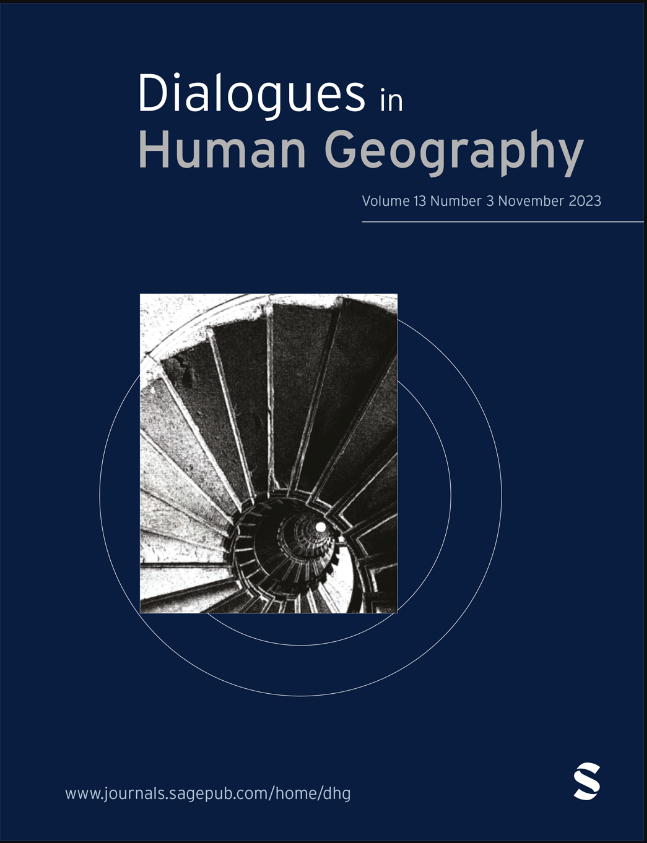遥远的时间:从 "那里 "和 "那时 "看城市化的未来
IF 8.2
1区 社会学
Q1 GEOGRAPHY
引用次数: 0
摘要
近期的地理学术研究主要集中在城市发展中线性时间与周期时间的脱节。本文提出了 "遥远时间 "的概念,将其作为一种时间权力的隐喻,使边缘化公民与国家保持可治理的距离。西姆拉曾是印度殖民时期的夏都,也是喜马拉雅山上的热门旅游城市,本文以西姆拉为例,论证了遥远的时间产生于 "本地人 "在被殖民国家蹂躏的脆弱生态景观上定居的时间重新排序,然后在后殖民时期对智能城市未来的想象中重复出现。本文 "沿着 "殖民时期 "本地人 "逐步建房的档案,以及对目前生活在智能城市项目拆迁威胁下的西姆拉工人阶级居民的访谈,提出遥远的时间也是边缘公民主张时间正义的空间。即使国家通过后/殖民规划进行时间疏远,边缘公民也会使用等待、混淆和规避作为时间套利的工具。他们强调,对智能城市未来的渴望不仅产生于 "此时此地 "的当下,也来自不同过去和未来的 "彼时彼地"。本文章由计算机程序翻译,如有差异,请以英文原文为准。
Distant time: The future of urbanisation from ‘there’ and ‘then’
Recent geographical scholarship has mainly focussed on the disjunctures between linear and cyclical time in urban development. This paper proposes a notion of distant time as a metaphor of temporal power that keeps marginal citizens at a governable distance from the state. Taking the case of Shimla, an erstwhile Summer Capital of colonial India and a popular tourist town in the Himalayas, it argues that distant time emerges from the temporal reordering of ‘native’ settlement on a fragile ecological landscape ravaged by the colonial state, that is then repeated in postcolonial imaginaries of smart urban futures. Reading ‘along the grain’ of colonial archives of incremental housebuilding by the ‘natives’, as well as interviews with current working class residents of Shimla living under threat of demolition from proposed smart city projects, this paper suggests that distant time is also a space for marginal citizens to claim temporal justice. Even as the state engages in temporal distancing through post/colonial planning, marginal citizens use waiting, confusing, and circumventing as tools of temporal arbitrage. They highlight that aspirations for smart urban futures are not just produced in the ‘here and now’ of the present, but also from the ‘there and then’ of different pasts and futures.
求助全文
通过发布文献求助,成功后即可免费获取论文全文。
去求助
来源期刊

Dialogues in Human Geography
GEOGRAPHY-
CiteScore
8.00
自引率
4.00%
发文量
86
期刊介绍:
Dialogues in Human Geography aims to foster open and critical debate on the philosophical, methodological, and pedagogical underpinnings of geographic thought and practice. The journal publishes articles, accompanied by responses, that critique current thinking and practice while charting future directions for geographic thought, empirical research, and pedagogy. Dialogues is theoretically oriented, forward-looking, and seeks to publish original and innovative work that expands the boundaries of geographical theory, practice, and pedagogy through a unique format of open peer commentary. This format encourages engaged dialogue. The journal's scope encompasses the broader agenda of human geography within the context of social sciences, humanities, and environmental sciences, as well as specific ideas, debates, and practices within disciplinary subfields. It is relevant and useful to those interested in all aspects of the discipline.
 求助内容:
求助内容: 应助结果提醒方式:
应助结果提醒方式:


